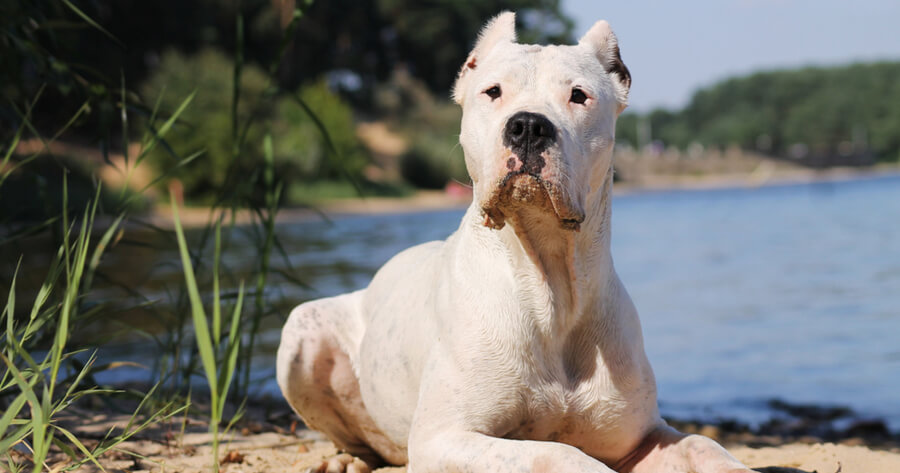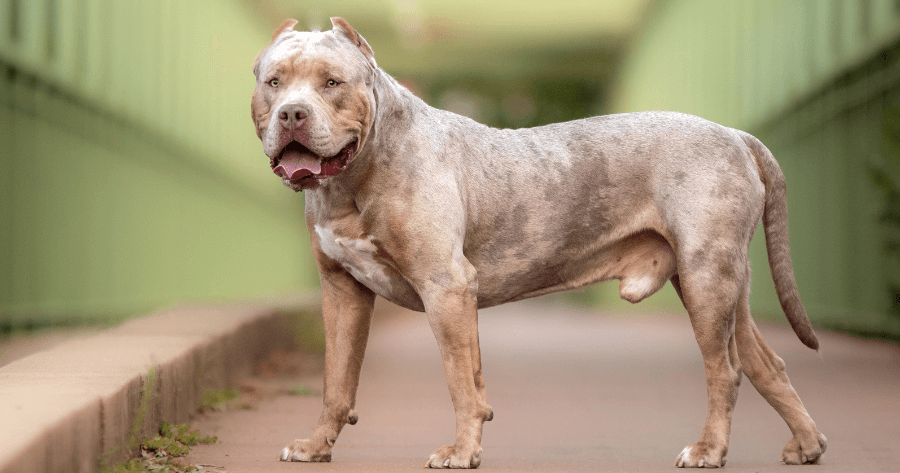Since 1991 dog owners and breeders in England, Wales, Scotland and Northern Ireland have been governed by the Dangerous Dogs Act (DDA). The Act provides strict guidance for police and local authorities to follow in order that the public is not harmed by out of control dogs.
Controversially, the Act also deems certain breeds of dogs “dangerous”. It was brought into force in the wake of some horrific attacks carried out by, specifically, Pitbull Terriers. Thus, along with three other breeds of fighting dog, the Act included a ban on ownership of a Pitbull.
What makes a dog “dangerous”?
The law states that any dog that presents a serious risk to the public is dangerous. The DDA makes it clear that a dog of any breed that by its behaviour increases public concern may be treated as a dangerous dog.
By law the Department for Environment, Food and Rural Affairs affords local authorities and the police the power to:
- Enforce and monitor the ban on four specific breeds of dog
- Enforce and take action against a dog that is dangerously out of control
It is the breed specific legislation alluded to here that has caused the most disagreement among behaviourists and politicians. When the Act was drawn up, several brutal attacks on had been reported in the news. Almost all of these attacks involved the Pitbull Terrier, or dogs that had been specifically bred to be aggressive.
As a result of the publicity, the Act banned the ownership of the Pitbull breed and considered the following other breeds to be equally as dangerous:
- Japanese Tosa
- Dogo Argentino
- Fila Braziliero
The logic? All of these breeds had been for many years bred for their fighting ability, strength, power and aggression (the Fila Braziliero was in years gone by chosen by Brazilian slave owners to chase and capture runaway slaves). It was these dogs that were most likely to cause harm to people.
Pitbull Terrier

The Pitbull breed includes American Pit Bull Terrier, American Staffordshire Terrier, American Bully and Staffordshire Bull Terrier. The Pitbull Terrier was originally bred in the UK for blood sports. It was used to fight other dogs, bears and bulls. Such sports were made illegal in 1835, but some owners of the Pitbull continue to breed them as fighters even today.
Although the Pitbull may be considered no more powerful than a Dogue de Bordeaux or other similarly well-built dog the breed has been tainted by its association with owners engaged in criminal activity.
DEFRA warns enforcers of the DDA, “Often there is a link between people involved in the irresponsible ownership of dogs or illegal breeding and selling of s1 prohibited dogs and other anti-social or criminal behaviour or activities. Therefore the police service is best placed to investigate allegations and suspected offences under this Act.”
Tosa

As with the Pitbull, the Tosa has been bred of countless generations to engage in blood sports. It is the only dog still used in legal dog fights in Japan. The dog is considered a rare breed; its last surge of popularity was in the 1920s.
Dogo Argentino

A muscular dog, the Dogo Argentino is a breed known for its unsteady temperament. The base breed of this dog is the Cordoba, an extinct breed of fighting dog known for its ferocity and aggression. Despite breeders crossing the Cordoba with less aggressive dogs, such as the Great Dane and Boxer, the Dogo Argentino has retained some of the undesirable qualities of its lineage.
Fila Braziliero

The Fila Braziliero was bred to assist farmers and slave owners in their work. The dog is exceptionally powerful and appears intimidating even when it is relaxed. The Fila was adept at tracking and holding down escaped slaves until their owner arrived. Tireless and versatile, the Fila Braziliero is wary of strangers and quick to anger. Untrained, they are considered especially dangerous.
American XL Bully

The American XL Bully will be added to the Dangerous Dogs Act by the end of 2023. The breed has been responsible for 70% of dog-attack related deaths in the UK since 2021. American XL Bully dogs were originally brought to the UK from America and are not an officially recognised breed, much like the Pitbull Terrier. They are mix of a variety of breeds, including the American Bulldog, American Staffordshire Terrier, and Olde English Bulldog. Dog experts will have to work on determining a breed standard so that the dogs can be correctly identified.
Nature vs nurture
We may talk of the negative qualities of the above five breeds and their historic association with violence and blood sports, but it is herein that the controversy surrounding the DDA originates, since it is reasonable to assume that there are other dogs, larger perhaps than one of the banned breeds that could pose as much of a risk. On the flip side there are dogs smaller than those we have mentioned that can pose a serious risk to young children.
The debate thus centres on breed specific legislation. Is it right to ban dogs simply due to their breeding, or should the law be changed simply to apply to any dog that causes a nuisance or hurts someone? Many believe each dog should be considered on its individual merits, and that the responsibility of training a dog not to be aggressive should be the owner’s.
Dog bite strength
Something that may prove a useful tool in our analysis of the DDA is the bite strength of certain dogs. While this cannot be used to determine which dogs are more dangerous than others, it does serve as a useful reminder that most dogs - no matter what their breed - are potentially lethal.
The bite strength of an adult human is thought to be in the region of 160 PSI (pounds per square inch), according to Science Focus. As a comparison, the following breeds of dog are listed beside their bite strength:
- Kangal - 743 PSI (strongest bite)
- American Bandogge - 730 PSI
- Cane Corso - 700 PSI
- Dogue de Bordeuax - 556 PSI
- Tosa - 556 PSI
The Dogo Argentino has the eighth strongest bite, according to Pet Comments, but the Pitbull comes in at 19th, just a few PSIs more than the Labrador.
Dog attacks
In 2016, The Independent revealed that the dog most likely to bite was in fact the Labrador. A survey by Animal Friends pet insurers of injury claims revealed the breeds involved in nasty attacks were not just the Staffies; GSDs, Collies and the Lab – a firm family favourite – were all responsible for the majority of assaults.
However, of 28 fatal dog attacks in the UK between 2010 and 2019, seven involved a Staffy, three involved a Pitbull cross and five involved an American Bulldog. Recently, the American XL Bully has been getting a lot of attention due to its behaviour as well. The breed has been linked to at least two fatal attacks in 2023 and six of the 10 fatal dog attacks in the U.K. in 2022.
The arguments that continue about the efficacy of the Dangerous Dogs Act stem from the widely-held proposition that a dog should be treated on its individual merits. In other words, one breed cannot be deemed more dangerous than another.
Those who rail against the DDA also believe the way a dog is nurtured is more intrinsic to its behaviour than its in-built nature. Poor upbringing, a lack of training and even deliberate action to increase a dog’s bloodlust must all contribute to the danger posed by a dog.
Some breeds of dog have been fighters for centuries, but a fighting instinct may be possible to eradicate by good training and a mastery of the animal.

